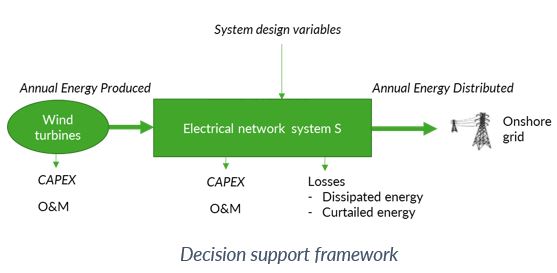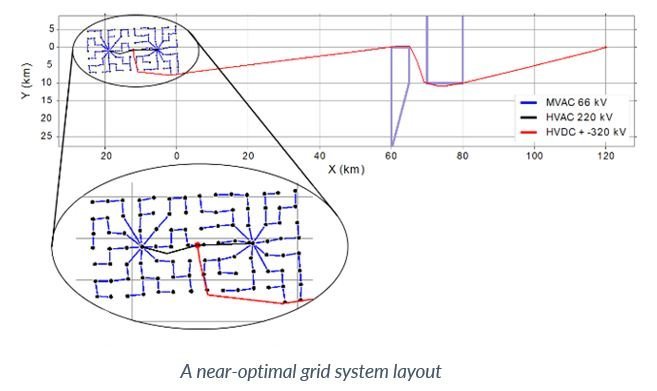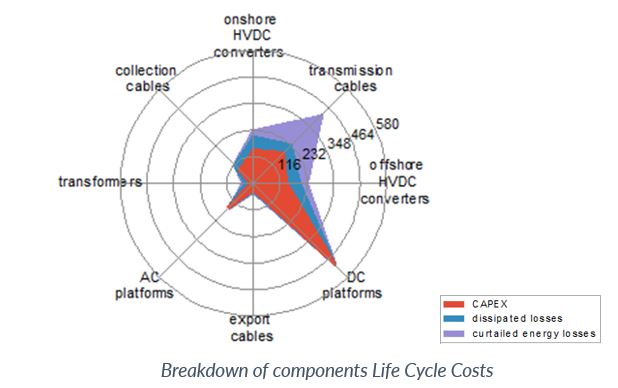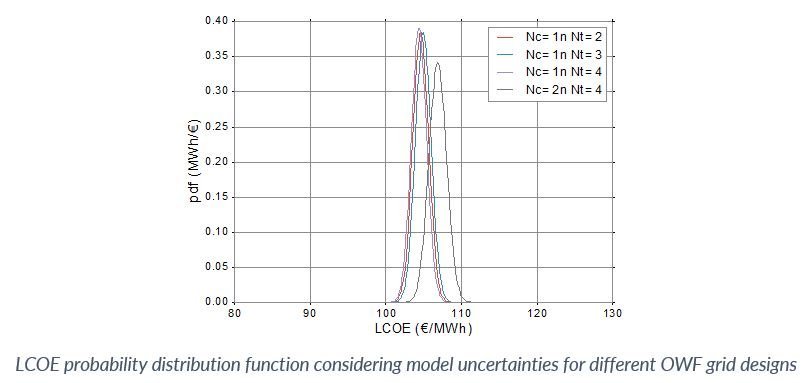Thesis Swann GASNIER
“Decision support framework for offshore wind farm electrical networks: Robust design and assessment under uncertainties’’
“Decision support framework for offshore wind farm electrical networks:
Robust design and assessment under uncertainties’’
Large offshore wind farms will be important players within the future energy landscape. What is the expected benefit for a project is an essential issue from Investor side, considering both technical and economic aspects. Levelized Cost Of Energy – LCOE – is a standard economic indicator which allows to assess the economic viability of a project. Offshore wind power projects LCOE have not yet reached onshore ones. In this framework, the design of the offshore wind farm electrical grid has a significant contribution to the whole LCOE. Depending on the distance to the onshore grid, many possibilities of architectures and associated technologies can be considered for this connection network (AC, DC etc.). The question is then: what is the best offshore wind farm electrical grid technological solution and associated design for a specific wind farm project?
The goal of this research work is to provide a decision support framework for the assessment and the planning of the architecture for the electrical connecting network. The architecture assessment relies on the calculation of annual energy losses (dissipated through the network or curtailed due to network unavailability) and on investment costs.

To compute these quantities, models and methods are implemented in a software tool, with its dedicated user interface. The proposed tool computes for each user pre-selected technological solution:
- A near-optimal design of electrical grid layout with cable sizing. The optimization problem formulation is generic in regard to the various architectures which are considered and a quick heuristic solving approach is used.

- The CAPEX based on dedicated cost models.
- The OPEX related to energy losses and operation & maintenance costs.
- The associated LCOE, considering user-selected financial parameters. Additionally, the life cycle cost (LCC) related to each part of the electrical grid can be broken down in order to identify the subsystems impact on LCOE.

Finally, a probabilistic analytical method is proposed to take into account the models uncertainties (related to capex models and reliability parameters) and to study their propagations to the decision criteria.



